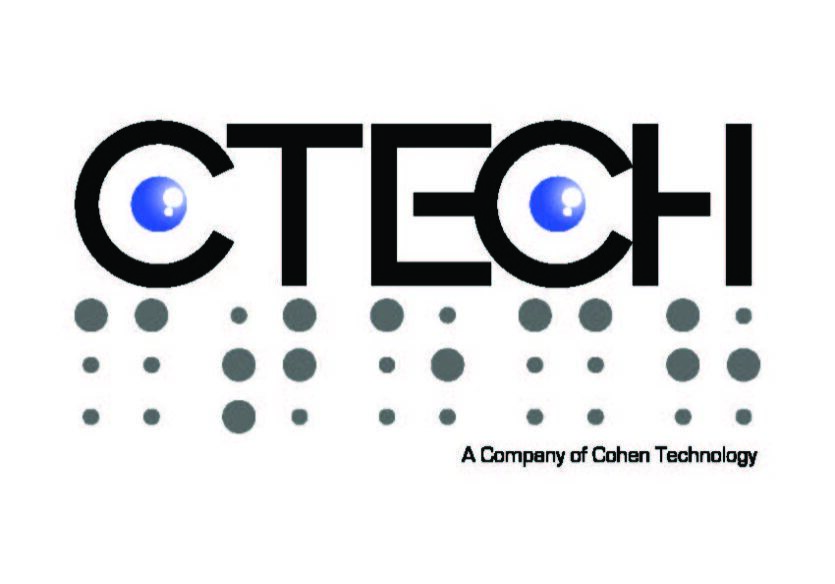Types of Eye Problems We Address
C TECH | A Company of Cohen Technology Inc. Adaptive Technology And Low Vision Products
Low Vision is a visual impairment that cannot be fully corrected with regular eyeglasses, contact lenses, medication or surgery. Despite all conventional treatment, vision remains blurred or distorted, and it interferes with the ability to read, write, and shop. Millions of Americans lose some of their vision every year due to a variety of eye conditions such as Diabetic Retinopathy, Glaucoma, Macular Degeneration or Retinitis Pigmentosa. If you are among the growing number of people living with low vision, you can still live independently with the help of low vision aids. C TECH, a leading distributor of products for the blind and visually impaired, can help you to overcome some of those difficulties.

Macular Degeneration
Macular Degeneration is a medical condition often associated with aging that results in vision loss in the central field of vision. Stargardt Disease is the most common form of inherited juvenile macular degeneration. Central vision helps us to see objects clearly and perform tasks such as reading and driving.

Glaucoma
Glaucoma is an eye condition in which the optic nerve is damaged, causing vision loss. The optic nerve is located at the back of the eye and transmits the images we see to the brain for interpretation. Glaucoma almost always begins with a subtle loss of peripheral (side) vision and progresses.

Diabetic Retinopathy
Diabetic Retinopathy is a complication brought on by diabetes. The retina, the light sensitive tissue that lines the inner surface of the eye, is damaged. Diabetes causes abnormal changes in the body’s blood sugar levels. High levels of blood sugar can alter the blood flow to the body’s organs, including the eyes.
Mindfulness Meditation
and Glaucoma
In the July 26, 2019 issue of Parade Magazine, the following article appeared and we thought you needed to know.
Say Om for Your Eyes
If you have glaucoma, mindfulness meditation might give your treatment regimen a boost-75% of patients who meditated for an hour a day saw their eye pressure drop by 25% in just three weeks, according to a recent study published in The Journal of Glaucoma. The practice - which emphasizes focusing on the present moment - was shown to lower levels of the stress hormone cortisol and improve overall quality of
life too.

Cataract
A cataract is a clouding of the eye’s natural lens. Our lens is mainly made up of water and protein. The proteins are arranged in such a way that the lens stays clean and light is able to pass through. As we grow older, some of these proteins may clump together and start to cloud a small area of the lens. This is a cataract.

Retinitis Pigmentosa
Retinitis Pigmentosa is a group of genetic eye conditions causing progressive degeneration of the retina, the light sensitive layer of tissue lining the back of the eye. The light receptors of the retina are called rods and cones. As a result of Retinitis Pigmentosa the rods, and in a later stage the cones, slowly die, causing reduced vision.

Blindness
Blindness is the state of being sightless. A blind individual is unable to see. Some may have a limited ability to see objects using special aids or may be able to perceive light or a light source. All people who are blind experience sightlessness to various degrees. Blindness can be the result of a variety
of causes.

Strabismus
Strabismus is an eye condition in which the eyes are aligned improperly and point in different directions. One eye may look straight ahead, while the other may turn inward, outward, downward or upward. The manner in which the eye turns may be consistent or it may vary. Which eye is straight and which eye turns may also differ.

Ocular Tumors
Ocular tumors are tumors inside the eye. They do not occur frequently, but when they do, they will often grow on the colored part of the eye, called the iris, or in the back of the eye. Left untreated, ocular tumors can not only threaten your vision, but also your life.

Nystagmus
Nystagmus is an uncontrolled and involuntary movement of the eyes. The movement is often side to side (horizontal) but it can also be up and down (vertical) or circular (rotary). The movement can vary between slow and fast and almost always involves
both eyes.
